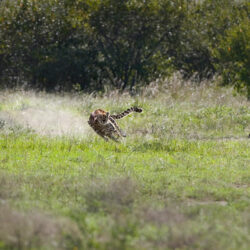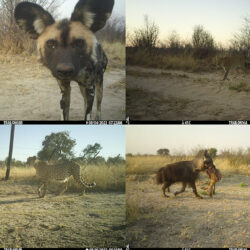Guts in the Grass – Kill ID and Wildlife Forensics
-
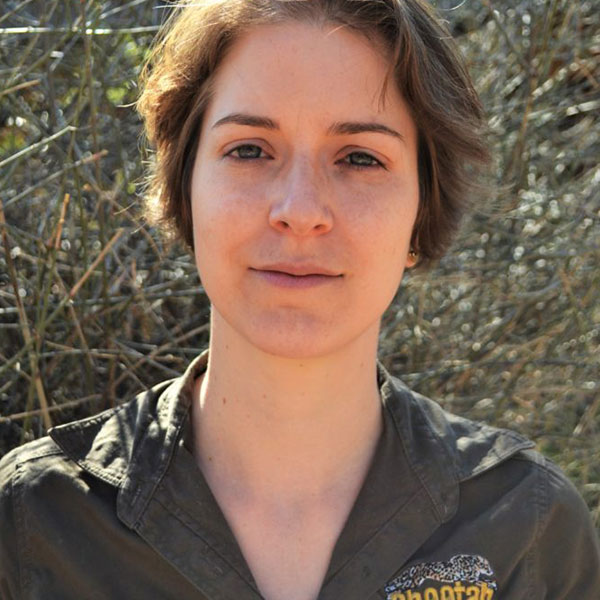
- by Julia Zumbroich August 4, 2020

The genetics team went on a little hike recently to find a subadult eland that was freshly killed by some newly released male cheetahs. Thanks to our curator Eli, we had the GPS coordinates for the kill and we only needed to be able to make it through the bush. Once we found the eland carcass, we took samples for our predator ID pilot study.
We swab predator saliva from fresh bite marks in order to identify the species responsible for predation and potentially even the individual animal. Although in this case it is clear who ate the eland (thanks to the cheetah’s GPS collars) it is a pilot study so we’re always happy to add more samples to the collection. Samples like these help us to test the method.
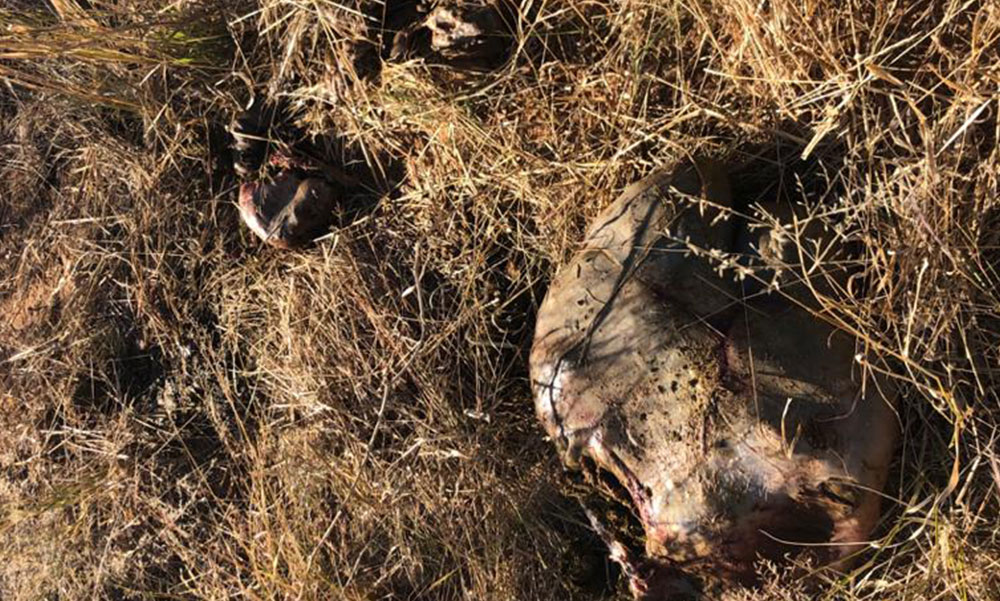
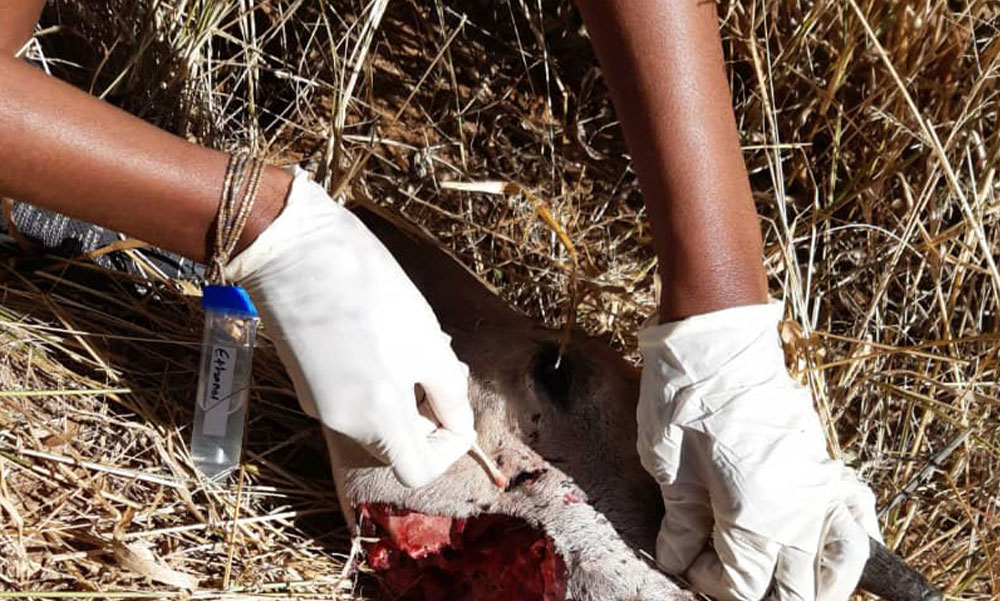
When cheetahs make larger kills like this eland, we tend to always find the GI tract pulled aside in this way. What we found was that the males made the kill, then they opened the carcass and as soon as they were able. They then pulled out all of the GI tract and dragged the rest of the carcass about 30m away. The GI tract is the most smelly part of the carcass and that is what will attract the attention of other predators looking to perhaps steal from the cheetah. So to leave it in a different location to the edible meat portion, may help the cheetahs keep their kill for longer. Cheetahs very often have their kills stolen by other larger or pack living predators.
Related Reading
-
October 15, 2024
The Ecology of the Landscape Down to the Smallest Part

